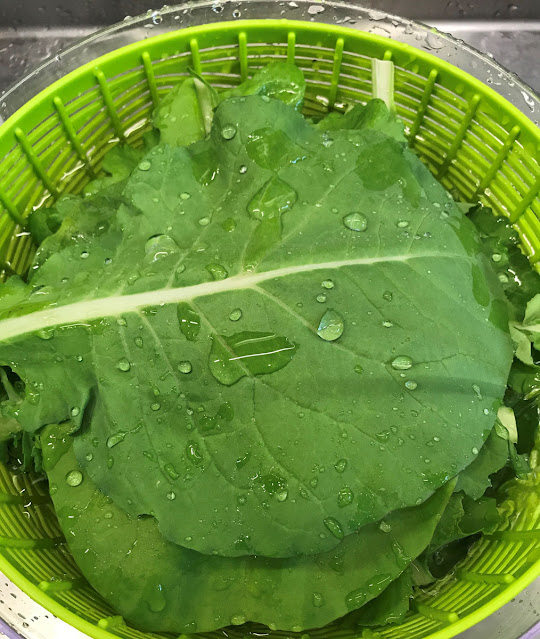Here's another quick recipe using SENPOSAI! It uses only one pan, and dinner was on the table in 30 minutes. If you make the hollandaise fresh, add the egg whites to the scrambled eggs.
Scrambled eggs are my last-minute solution to the 'oops, I forgot to plan dinner' dilemma. If I have spinach or arugula in the fridge, I usually add it to the eggs, so I decided to try the recipe with senposai. As you can see, we like a high senposai-to-eggs ratio. Feel free to use less.
After dinner, my husband declared he was a senposai fan!
The next day, he used the leftover eggs in an open-faced sandwich, layered between ham and cheese and then baked until the cheese melted.
The hollandaise is optional, turning the meal into a deconstructed Florentine Eggs Benedict. I made it because I had chive blossoms that needed to be used, and we now use cold hollandaise instead of 'mayonnaise'. It was so good I'm making a second batch before the chive blossoms are all gone.
Scrambled Eggs with Senposai and Chive Blossom Hollandaise
Serves 4
Ingredients
- 3 T. ghee
- 2 cups chopped onions (1 large or 2 medium)
- 4 cups chopped senposai, including the stems
- 1.5 t. himalayan pink salt
- 1 t. powdered jalapeno, cayenne or black pepper to taste
- 1/2 t. cumin, either ground or seeds, your choice
- 12 eggs, beaten to combine (I use an immersion blender for this)
- Chive Blossom Hollandaise either freshly made or at room temperature
In a large saute pan, melt 1 T. ghee over med-high heat and saute the onions and senposai stems, stirring occasionally until the onions are dark brown on the edges. I add the onions first and let the senposai stems steam on top of them until the onions start to brown.
If you stir too often, the onions will cook through before they brown. If the heat is too low, they won't brown at all. You want them nicely browned but not mushy. This will take 10-15 minutes.
I clean and chop the senposai leaves while I'm waiting for the onions to brown.
If you're going to make the hollandaise fresh, remove the pan from the heat and make the hollandaise now.
Return the onions to medium-high heat. Add 1 T. ghee to the pan, add the senposai leaves and cook for about 2 minutes until they're wilted but still bright green. Don't overcook them as they will continue to cook after you add the eggs.
Season with salt, pepper, and cumin.
Add the last tablespoon ghee to the pan. Add the beaten eggs and reduce the heat to medium. Stir constantly until the eggs are half coagulated, 3-5 minutes.
Reduce the heat to medium-low and stir until they're creamy, another 3 minutes. There should still be a little moisture in the pan - don't cook them until they're dry!
The pan I use is enameled steel, made by Chantal. If I cook the eggs on medium or medium-low they do not stick! You can see in the photo below, they are not stuck to the pan.
Even if they did stick, I would not use a non-stick pan.
Serve drizzled with hollandaise and sprinkled with additional chives and blossoms.






















